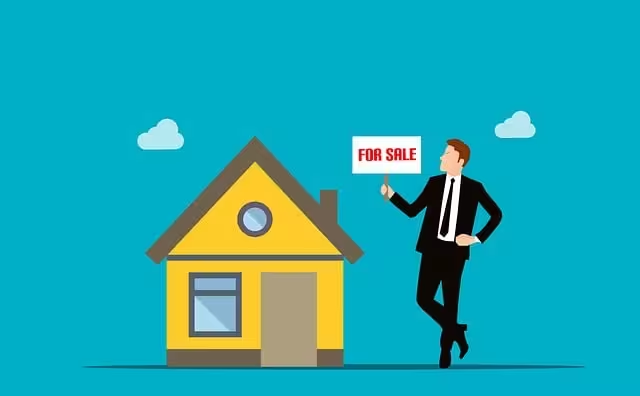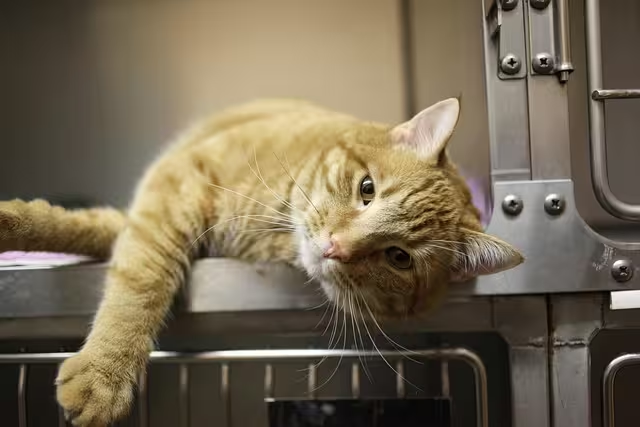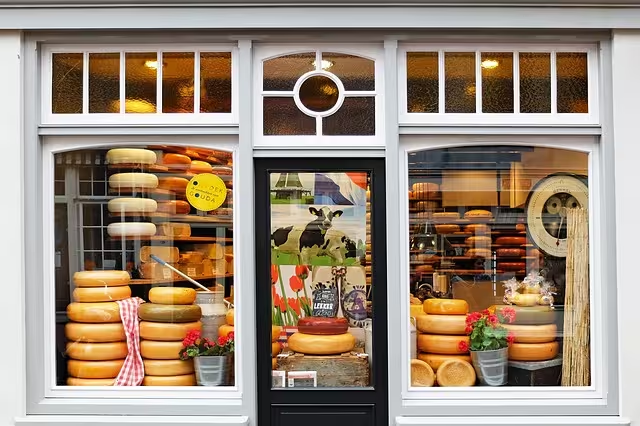In today’s digital world, it is easy to get lost in the noise. Many small businesses pour time and effort into social media, posting updates and hoping for the best. Yet, without a clear, local strategy, these efforts often fall flat, failing to bring new customers through the door or strengthen ties with existing ones. The truth is, nearly 50% of all Google searches are for local information. This means people are actively looking for businesses just like yours in their immediate area. But simply having a social media page is not enough to capture their attention. A successful strategy requires a deep focus on local engagement.
The real challenge is not just getting “likes”; it is turning those online interactions into real world visits and lasting relationships. This is where many businesses miss a huge opportunity. They treat social media as a megaphone to shout promotions, instead of a community square where they can build real connections.
This post will examine five real world examples of successful local social media campaigns, providing a tactical blueprint for replicating their success for your local engagement. We will explore platform specific strategies and content ideas, and show you how to measure what matters. By the end, you will have a clear path to boosting your own local engagement and seeing a tangible return on your investment. Improving your local engagement is one of the most powerful things you can do for your business.
Table of Contents
Before You Post: Optimizing Your Digital Storefront
Before you can even think about creating exciting content, you need to make sure your digital foundation is solid. Think of your social media profiles as your online storefronts. If they are messy, confusing, or hard to find, potential customers will simply walk away. Nailing these basics is the first and most important step in any strategy for better local engagement.
First, let’s talk about profile optimization. This means ensuring your NAP is consistent across every single platform. NAP stands for Name, Address, and Phone Number. It might sound simple, but you would be surprised how many businesses have slight variations online. One profile might say “Main Street,” while another says “Main St.” Search engines like Google see these as different pieces of information, which can confuse them and hurt your visibility in local search results.
Go through every social media profile, your website, and your Google Business Profile. Make sure your business name, address, and phone number are identical everywhere. This simple act builds trust with both customers and search engines, forming the bedrock of effective local engagement.
Next is the power of geotagging. A geotag is essentially a digital pin that marks the physical location where a photo or video was taken. When you post on platforms like Instagram, you have the option to add your location, whether it is your business address or a nearby landmark. You should be doing this every single time. When you geotag a post, it becomes discoverable to anyone searching for content in that specific area. Someone exploring your town on Instagram might tap on the location and see your post, even if they do not follow you.
It is a free and incredibly simple way to increase your visibility with a highly relevant audience. This is a core tactic for driving organic local engagement because it puts your content directly in front of people who are physically close enough to become customers.
Finally, you need a smart community hashtag strategy. Many businesses make the mistake of using only broad, generic hashtags like #food or #shopping. While these might get you a few stray likes from anywhere in the world, they do nothing to attract local customers. To improve local engagement, you need to think smaller and more specific. Research and use hyperlocal hashtags that people in your community are actually using. These could be neighborhood names (#DowntownTitusville), local event tags (#OilFestivalPA), or community slogans. You can even create your own branded hashtag for your business.
By using these targeted tags, you insert your business into local conversations and make your content visible to the people who matter most: those in your community. Consistent use of local hashtags is a powerful signal that your business is an active part of the neighborhood, which is key to fostering strong local engagement.
Example 1: The Neighborhood Café & The Instagram UGC Campaign

The Scenario: Imagine a charming little coffee shop, “The Daily Grind,” tucked away on a side street. They have great coffee and a cozy atmosphere, but they struggle to compete with the big chain coffee shop on the main road. Their Instagram page is inconsistent, and they are not seeing any real business growth from their posts. They need a way to build a loyal following and turn their existing customers into vocal advocates. Their goal is to increase foot traffic by improving their local engagement.
The Strategy: The Daily Grind decided to launch a “Mugshot of the Week” contest. The idea was simple but brilliant. They encouraged customers to post a creative photo featuring their coffee and one of the shop’s unique, artsy mugs. To enter, customers had to tag the café’s Instagram account, @TheDailyGrind, and use the branded hashtag #GrindMugshot. This type of campaign is called User Generated Content, or UGC. Instead of the business creating all the content, they empower their customers to do it for them. This approach is fantastic for local engagement because it feels authentic and community driven.
Platform Focus: Instagram was the perfect platform for this campaign. Coffee shop culture is highly visual, from latte art to cozy décor, which makes it a natural fit for a photo based app. Instagram’s features, like Stories and hashtags, were essential to the campaign’s success. The visual nature of the platform allowed customers to showcase their personality and creativity, making the contest more fun and interactive, which is a cornerstone of great local engagement.
Key Tactics in Detail: The core tactic was leveraging UGC to build social proof. When potential customers see their friends and neighbors posting about a business, it acts as a powerful, trusted recommendation. The Daily Grind promoted the contest heavily in their physical store with a small sign at the counter and by having baristas mention it. They made the rules very clear and the prize appealing: the weekly winner would get a free coffee every day for a week and have their photo featured on the café’s official Instagram page.
This “featured” aspect was just as important as the free coffee, as it gave the winner a small moment of local fame. This strategy transformed passive customers into active participants in the brand’s story, a major win for local engagement.
The Results: The campaign was a huge success. Within the first month, the number of photos tagged with their location and brand name tripled. Their Instagram page was suddenly filled with beautiful, authentic images of real people enjoying their coffee, which was far more compelling than any professional photo they could have taken. They saw a noticeable increase in new customers who mentioned seeing their friends’ posts online. The contest created a vibrant community around the brand, dramatically boosting their local engagement and, most importantly, their sales.
Example 2: The Real Estate Agent & The Facebook Live Neighborhood Tour

The Scenario: Meet Jennifer, a real estate agent trying to establish herself as the go to expert in a specific, competitive suburban neighborhood. She knows the area inside and out, but she struggles to communicate that expertise online. Her Facebook page is filled with standard property listings, which get very little interaction. She needs a way to build trust and show her value beyond just buying and selling houses. She knows that stronger local engagement will lead to more clients.
The Strategy: Jennifer decided to start a weekly Facebook Live series called “Saturday Strolls.” Every Saturday morning, she would go live on her business page and take her viewers on a walking tour of a different part of the neighborhood. Crucially, she did not just focus on houses for sale. She would highlight community assets like a newly renovated park, interview the owner of a popular local bakery, or talk about the history of a specific street. Her goal was to sell the neighborhood’s lifestyle, not just its properties. This value-first approach is fundamental to building authentic local engagement.
Platform Focus: Facebook was the ideal choice for Jennifer. Its user base often skews a bit older than Instagram’s, aligning well with the demographic of potential homebuyers. Facebook Live is a powerful tool for real time interaction, allowing viewers to ask questions in the comments, which Jennifer could answer on the spot. Furthermore, she could easily share her live videos into local community Facebook Groups, dramatically expanding her reach to a highly relevant audience. This ability to share content within targeted groups makes Facebook a powerhouse for local engagement.
Key Tactics in Detail: Jennifers’s main tactic was providing immense value with zero expectation of an immediate sale. By positioning herself as a community guide, she built trust and authority. People started tuning in every week just to see what was new in their neighborhood. She was consistent, always going live at the same time, and she promoted each “stroll” a few days in advance.
During the live videos, she was engaging and personal, greeting regular viewers by name and encouraging questions. After each broadcast, she would save the video to her page so people who missed it could watch it later. This created a valuable library of content that showcased her unparalleled local knowledge, serving as a long term asset for her local engagement efforts.
The Results: The “Saturday Strolls” series transformed Jennifer’s business. Her Facebook page’s local engagement skyrocketed, with hundreds of views on each video and dozens of comments and questions. More importantly, she started receiving direct messages from people who were thinking about moving to the area and felt like they already knew and trusted her. She became the agent people thought of when they thought of that neighborhood. She was no longer just another agent posting listings; she was a trusted community expert, all thanks to her focus on genuine local engagement.
Example 3: The Boutique Retailer & The “Local Legends” TikTok Series
The Scenario: A trendy clothing boutique called “Vogue & Vine” is located in a downtown area full of unique shops. While they have a steady stream of customers, they want to connect with a younger demographic (Gen Z and younger millennials) and solidify their reputation as a cool, community focused brand. They notice a lot of their target customers are on TikTok, but they are not sure how to create content that feels genuine and not like a stuffy ad. They need a creative strategy for local engagement on a new platform.
The Strategy: Vogue & Vine created a short form video series for TikTok and Instagram Reels called “Local Legends.” The series had nothing to do with their own clothes. Instead, each 30 second video featured the owner or a key employee of another nearby, non competing small business. One week it was the guy who runs the vintage record store, the next it was the woman who makes amazing tacos at the shop down the street. In the videos, they would ask fun, quick questions like, “What’s the weirdest thing that’s ever happened in your shop?” or “What’s your favorite hidden gem in this neighborhood?”
Platform Focus: TikTok and Instagram Reels were the perfect platforms for this idea. The short, fast paced, and authentic video format is native to these platforms and highly favored by their algorithms. Using popular trending audio and quick cuts, the boutique could create content that felt entertaining, not promotional. This approach to video content is incredibly effective for capturing attention and driving local engagement with a younger audience.
Key Tactics in Detail: The core tactic was collaborative hyperlocal advertising. By featuring other local business owners, Vogue & Vine was tapping into their existing customer bases. The record store owner would share the video with his followers, and the taco shop owner would do the same. This created a powerful cross promotional effect, introducing Vogue & Vine to new, local audiences. It fostered a sense of a tight knit downtown community, positioning the boutique as a supportive neighbor, not just a retailer. This community building aspect is the secret sauce to exceptional local engagement. They made sure to tag each featured business and use relevant local hashtags to maximize visibility.
The Results: The “Local Legends” series was a viral hit locally. The videos got thousands of views, far more than any of their previous content. People in the comments would tag their friends and say, “We should check out this whole street!” The boutique saw an increase in younger shoppers who mentioned seeing them on TikTok. The campaign not only boosted their brand image but also strengthened their relationships with other local business owners, leading to more collaborative opportunities down the line. It was a masterclass in modern local engagement.
Example 4: The Service Provider & Nextdoor Experts
The Scenario: Consider “Joe’s Plumbing,” a local plumbing company. Their business relies entirely on local residents needing their services. Traditional advertising is expensive, and they need a way to build trust so that when a pipe bursts, they are the first company people think of. They need a digital strategy that directly targets homeowners in their specific service areas and focuses on building a reputation for reliability. For them, local engagement is about becoming a trusted resource.
The Strategy: Joe’s Plumbing decided to make Nextdoor their primary social media focus. Nextdoor is a unique social network designed for neighborhoods. Instead of using it for direct advertising, which can be seen as spammy, their strategy was to become the go to plumbing expert on the platform. The owner, Dave, would spend 15 minutes each day scrolling through the local feed. When he saw a resident asking a question about a leaky faucet or a strange noise from their water heater, he would provide a clear, helpful, and free answer.
Platform Focus: Nextdoor was the only logical choice for this strategy. The platform’s entire purpose is to connect neighbors and local businesses. The user base consists entirely of verified residents in their service area, meaning every interaction is with a potential customer. Unlike other platforms, where content can be seen by anyone, Nextdoor provides a pre-qualified audience, making it an incredibly efficient tool for hyperlocal local engagement.
Key Tactics in Detail: The strategy was pure content marketing built on helpfulness. Dave never ended his advice with a hard sales pitch. He would simply offer a helpful diagnosis, suggest a simple DIY fix if possible, and end with, “If that doesn’t solve it, it might be a more complex issue.” He also proactively posted seasonal tips, like “How to winterize your pipes before the first freeze,” which provided value to the entire community.
This no pressure approach established him as a trustworthy and knowledgeable expert. Residents began to tag him in posts, saying, “You should ask Dave from Joe’s Plumbing.” He built his reputation one helpful comment at a time, a perfect example of service based local engagement.
The Results: This strategy generated a steady stream of high quality leads for Joe’s Plumbing. Because Dave had already built trust, when people did have a serious plumbing issue, they called him without shopping around. They already felt like they knew him. His business profile on Nextdoor filled up with positive recommendations, further cementing his status as the top plumber in the area. It was a slow but incredibly effective burn that built a loyal customer base through genuine local engagement.
Example 5: The Non-Profit & The LinkedIn Community Partner Showcas

The Scenario: A local animal shelter, the “Titusville Pet Haven,” relies on donations and corporate sponsorships to operate. They are great at using Facebook to promote adoptions, but they struggle to connect with the local business community to secure larger, more stable funding. They need a professional way to showcase their impact and attract corporate partners. Their challenge is to adapt their local engagement strategy for a B2B (business to business) audience.
The Strategy: The shelter’s director decided to leverage LinkedIn to create a “Community Partner Showcase.” Whenever a local business sponsored an event, made a significant donation, or even had employees volunteer for a day, the shelter would create a polished, professional post about it on LinkedIn. The post would thank the business profusely and, more importantly, explain the tangible impact of their contribution. For example, “Thanks to the generous sponsorship from Smith & Jones Law, we were able to provide medical care for 15 rescued puppies this month.”
Platform Focus: LinkedIn was the ideal platform for this B2B approach. It is the social network for professionals and businesses. Every company has a page, and their employees are active on the platform. By creating content here, the shelter could directly reach decision makers, company executives, and employees who might advocate for corporate giving. It allowed them to speak the language of corporate social responsibility, which is a different kind of local engagement than consumer facing posts.
Key Tactics in Detail: The key tactic was a combination of professional networking and public appreciation. In each showcase post, they would be sure to tag the official company page on LinkedIn as well as any specific executives or employees involved. This ensured the post appeared in the notifications and feeds of the people at that company. It served as a public “thank you” that the company could be proud of and even share on their own page.
This positive public relations created a powerful incentive for other local businesses to get involved. They saw that partnering with Titusville Pet Haven was not just a good deed but also great for their public image, a crucial component of B2B local engagement.
The Results: The LinkedIn strategy dramatically improved the shelter’s corporate fundraising. Other local businesses saw the showcase posts and reached out to see how they could get involved. The companies that were featured felt appreciated and were more likely to donate again in the future. The shelter successfully built a network of reliable corporate partners, creating a more stable financial future for their organization, all because they tailored their local engagement strategy to the right platform and audience.
From Vanity Metrics to Business Growth
One of the biggest mistakes businesses make with social media is chasing the wrong goals. It feels good to get a lot of likes on a post, but likes do not pay the bills. These are often called “vanity metrics” because they look good on the surface but do not necessarily translate to real business results. To truly understand the impact of your local engagement efforts, you need to track metrics that are directly connected to your bottom line.
Instead of just counting likes, start tracking website clicks from your social media profiles. Most platforms offer analytics that show you how many people clicked the link in your bio. You can use free tools like Bitly to create custom, trackable links for specific campaigns. For example, if you are promoting a special offer on Facebook, use a unique Bitly link. This will show you exactly how many people clicked through from that specific post.
Another powerful metric is the redemption of social media specific offers. Create a coupon or a special deal that is only available to your social media followers. It can be as simple as telling them to “mention this post for 10% off.” When customers use the offer, you have direct proof that your social media efforts are driving sales.
You should also pay attention to the growth in your local follower demographics. Instagram and Facebook provide insights that show you where your followers are located. If you see a steady increase in followers from your town and surrounding areas, it is a great sign that your local engagement strategy is working. Finally, never underestimate the power of simply asking. Instruct your staff to ask customers, “How did you hear about us?” When they say “I saw you on Instagram,” make a note of it. This qualitative data is incredibly valuable for understanding what is truly driving business. Focusing on these metrics will give you a clear picture of the real ROI of your local engagement.
Your Questions Answered
What are some quick social media ideas for local businesses?
If you are short on time but want to boost local engagement, try these quick ideas. Feature an “Employee of the Week” to humanize your brand. Run a simple poll in your Instagram Stories asking customers to vote on a new product flavor or color. Share a screenshot of a positive customer review and thank them publicly. Post a short behind the scenes video of you making a product or preparing for the day. Or, partner with a neighboring business for a simple joint giveaway.
How do you effectively target a local audience on Facebook?
Facebook’s Ads Manager is an incredibly powerful tool for local engagement. The most effective way to target a local audience is to use location based targeting. You can choose to show your ads to people within a specific radius, such as 5 or 10 miles, around your physical business address. You can also target by specific zip codes, cities, or neighborhoods. For even better results, layer this location targeting with interest targeting relevant to your business to reach the most receptive local audience.
Why is local social media marketing so important?
Local social media marketing is crucial because it allows you to connect with the people most likely to become repeat customers. It builds community trust in a way that national brands cannot replicate. Strong local engagement drives measurable foot traffic and sales. It also allows you to compete effectively with larger businesses by becoming the go to local choice. Finally, active local social profiles send positive signals to search engines like Google, which can help improve your visibility in local search results and on maps. Investing in local engagement is one of the smartest marketing decisions a small business can make.
Your First Step to Local Domination
We have explored five different businesses using five unique strategies to win at local engagement. The neighborhood café taught us the power of turning customers into creators with user generated content. The real estate agent showed us that providing value and expertise builds unbreakable trust. The boutique retailer demonstrated how collaboration with other local businesses can amplify your reach. The plumber proved that genuine helpfulness is the best sales pitch. And the non profit showed us how to tailor the message to the right platform to achieve specific goals.
The common thread is that none of these businesses simply advertised. They connected. They built communities. They became a valuable part of their neighborhood’s daily life. Now it is your turn. You do not need to do everything at once. The best way to start is to choose one strategy from this article that feels like the best fit for your business and your customers.
Your call to action is this: over the next 30 days, commit to trying a small scale version of one of these ideas. Launch a simple UGC contest, host one Facebook Live video, feature one neighboring business, or answer five questions on Nextdoor. Track your results, see what works, and build from there. The path to dominating your local market begins with a single, intentional step toward better local engagement.


